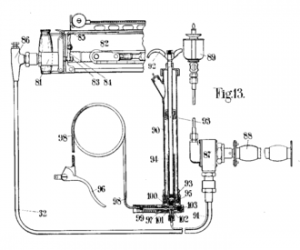Designers from both sides realised early on that devising ways to deny the enemy his ‘eyes’ by bringing down reconnaissance machines would be of paramount importance. Fitting a machine gun to the front of a speedy single-seater aeroplane was the way to go – the only problem being how to prevent the spinning airscrew in front being shot away in the process. It took another French airmen – an innovative pre-war pioneer – to take the air war to a whole new level. In April 1915, Roland Garros flew a modified Morane Saulnier L fitted with a fixed forward-firing Hotchkiss machine gun, the airscrew fitted with bullet deflector plates. It was a crude method to resolve the problem but it worked. By aiming his armed aeroplane at the enemy, Garros had little difficulty in shooting down three German aeroplanes before his luck ran out. Forced down by ground-fire, his partially-burnt monoplane was captured and the secret of his success revealed. True synchronisation gear systems had already been patented in Germany before the war; a system of interrupting the machine gun whenever a spinning blade passed across its muzzle. It was Dutchman Anthony Fokker and his team of engineers who perfected their push-rod system in May 1915 on a Fokker M5K monoplane. The Fokker Eindeckers, and to a greater extent their Pfalz E.I contemporaries, were not highly efficient aircraft but once armed with a synchronised machine gun, their pilots enjoyed supreme advantage and exacted a heavy toll on their adversaries. Flown by skilled practitioners such as Oswald Boelcke, Max Immelmann and others, the Fokkers shot down the virtually defenceless BE2c biplanes at an alarming rate.

